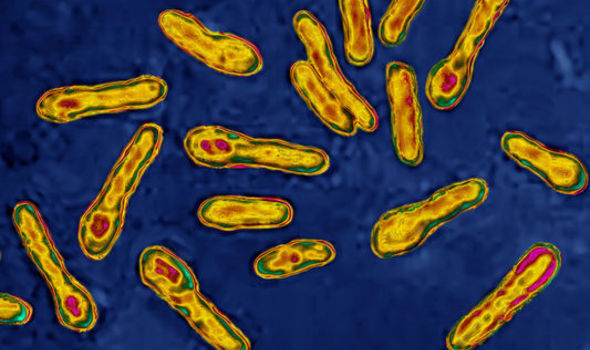An unfortunate case of botulism poisoning occurred in Ohio in April 2015. Twenty-five confirmed cases resulted in 1 death and 12 people still in the hospital one week later. The health department traced it to potato salad, made with water-bath processed home canned potatoes, served at a church supper.
There was quite a discussion going on about botulism in one of the canning groups I belonged to a year or so before the incident in Ohio. That’s when I decided to go back to my Food Microbiology college text and clarify some things in my mind.
From that microbiology book: “Botulism is a true food poisoning, caused by the ingestion of food containing the exotoxin produced by Clostridium botulinum during its growth in food.”
Botulism poisoning is caused by ingesting the toxin produced by Clostridium botulinum not the bacteria itself. C. botulinum produces spores. Under ideal conditions for the bacterium the spores germinate, then grow, then produce the toxin. We can stop the formation of poison in any stage by different methods. The composition of the host food, its nutritive properties, moisture content, pH (acidity), salt content, and several other factors affect how well the bacterium responds to our efforts to kill it. That explains why we have different processing times for pressure canning different foods. It is important that we follow established times and guidelines because there are actually 6 kinds of C. botulinum that can be found in food, and they all react differently. The processing times we have are to kill the most heat resistant spores even though they are probably not in the food. Fortunately, the most heat resistant is also one of the least common kinds of C. botulinum.
There are 3 ways we can prevent botulism poisoning in home preserved foods:
- Kill the spores before they germinate – this is what we do when we use the pressure canner. It takes very high heat to accomplish this.
- Prevent germination and growth – we do this with high acid, high salt, low moisture, and the presence of oxygen. Any one of those factors will prevent germination. That’s why we can water bath process high acid foods, why salt preserving works, why dehydration to a crisp dry stage works, and why we can dry pack dry foods with oxygen absorbers but avoid dry-packing foods that have more than 10% moisture. That’s why we don’t put dehydrated foods, especially vegetables (high pH, low acid), that are not crisp dry in an oxygen free (anaerobic) environment. We could leave our food out in the air but then we have to deal with the destructive powers of oxidation which is what we are trying to prevent in the first place when we preserve food.
- Destroy the toxin – this is why boiling for 15 minutes is recommended if there is any doubt as to the safety of your pressure canned food. This is really the only method available to the home cook.
Home canned meats and vegetables are low-salt, low-acid, high moisture foods in an anaerobic environment (the presence of all four conditions encourages spore germination) so they MUST be pressure canned for the length of time recommended and at the pressure recommended for your altitude in order to kill the spores.
Follow the rules. Can high-acid foods in a boiling water bath canner or pressure canner and low-acid foods only in a pressure canner. Follow the scientifically established methods and processing times and you should be fine. There has been very little botulism poisoning from food in the United States since pressure canning guidelines have been established. If botulism poisoning occurs, it is usually because someone under processed, or incorrectly processed, home canned foods or it came from commercially canned foods with seam leakage (so throw away leaky cans!).
This information can also be found on Pantry Cooking Plus.





